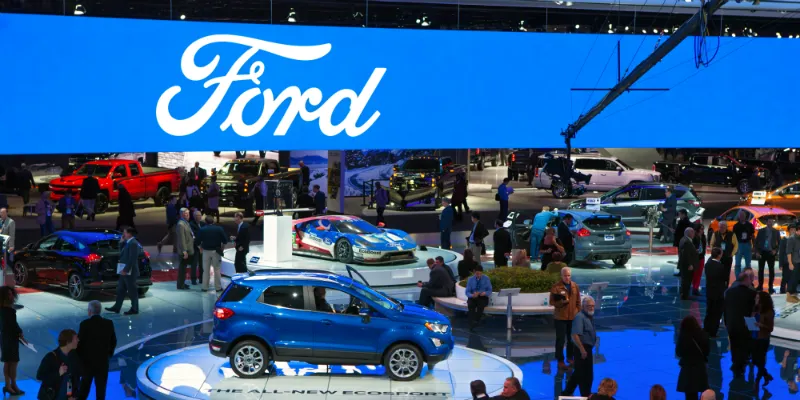Decision-making – Where Judgement Meets Action
Management is a continuous process of decision-making. How can leaders exercise their mental and intellectual capabilities to make the best choice that balances diverse realities and possibilities at play?
“We are convinced about your product”, said the investor. “We have understood that your customers love your product and your market is huge. But before we invest $500 million in your company, we want to be convinced that you have the capability to lead your team to build the organisation that will be both profitable and sustainable for many years to come. We want to be convinced that you have it in you to transition from entrepreneur to leader.
So, this is how we will establish your leadership qualities. We will narrate a story and at the end of the story, we will ask you a question pertaining to the story. If we like your answer, we will meet again to establish more of your leadership qualities. If we don’t like your answer, we will walk away. Each story will be around a particular theme. Today we will talk about decision-making.
It is a fundamental, intrinsic and integral part of management – yet, is considered a niche skill. It happens every minute in a professional’s career, consciously and sub-consciously – yet modern management weaves its share of scientific spins around it. This is the singularity and plurality of decision making – a vital behavior that links the means and ends in any organisation.

Decision making is an important aspect of entrepreneurship
Did you know that the word decision has its origin in the words ‘de cisco’ that means cutting away? In a practical manner of speaking, perhaps it signifies chipping away from multiple options to make a choice - or reach a conclusion. Peter Drucker distils its simplicity when he says, “Whatever a manager does, he does it through decision-making.”
The deceptiveness of all things simple never fails to amaze.
Where decision-making is concerned, the devil indeed lies in its layered details. It starts out as a means to an end – it is never the end itself. It is a continuous and never-ending activity. It calls for multiple skills and capabilities to achieve a fine balance. Of data and gut. Of the easy obvious and risky possibilities. Of staidness and the maverick. Of assertion and consultation. Of specific outcomes and larger good. Of the short and long term. And a host of others.
But the ultimate tease of decision-making is that you rarely see the true impact of your decision immediately. You chew your nails off waiting for the day of judgement – if it can be called that. And then the microscope of today bores into yesterday’s realities to pronounce its decision on the quality of your decision-making. Talk about the test of time – decision making is its favorite guinea pig!
The scientific process of decision-making calls for the six steps of problem identification, analysis, developing possible solutions, selecting the best option, execution and review against outcome. But decision-making is as much a process as it is an intellectual exercise. Vision, foresight, knowledge, brilliance, analytical skills, responsibility, experience and maturity come together in different proportions for different decisions in different situations and at different times.
Let us see how they were applied when Henry Ford decided to double wages to ‘$5 a day’ in 1914.
Like everything else, it started with a problem. Ford’s problem was its success. Their Model T, introduced in 1908, to fulfill Henry Ford’s vision “to build motor cars for the great multitude” was a game-changing concept of mass production. The moving assembly line introduced in 1913 at the Michigan plant achieved such efficiency that production doubled without having to increase the workforce. Payroll costs actually dipped.
But all was not hunky dory. Employee turnover was accelerating on account of the lackluster, repetitive and physically demanding nature of the assembly line work. It was at this point that Henry Ford decided to radically change employment policies.

Ford is one of the best know names in the Motorcar Industry.
Subject to certain conditions, he more than doubled the basic rate of pay to $5 a day (from $2.25 a day). He also reduced the workday from nine hours to eight. And moved the company to three shifts a day instead of two. Result? New jobs opened up. The quality of work life dramatically improved for employees. All this came at a price tag of an additional $10 million a year, that the New York Evening post ‘an act of extreme generosity.’
Generosity did they say? In truth, it unfolded to be an excellent investment. Turnover dipped – and how - within a year, it fell from 370% to 16%. Productivity soared close to 70%. Between 1910 and 1919, Henry Ford reduced The Model T’s price could be slashed from around $800 to $350 between 1910 and 1919. And Henry Ford became a billionaire.
Henry Ford achieved another game-changing result. The increase in wages was linked to character-building conditions. Among others, a Socialization Organisation was set up that monitored the workers lives to ensure they steered clear of vices like gambling and drinking. Immigrant workers needed to learn English to assimilate themselves better at work and in society.
Paternalistic as it seems, Ford envisioned it as character-building for their employees.
So, Mr. Entrepreneur, chuckled the investor. What, in your opinion, were the defining aspects of Henry Ford’s decision making?
The entrepreneur deliberated for some time and gathered his thoughts before answering.
The brilliance of Henry Ford’s decision lay in how he integrated every aspect of business.
Remember, $2.25 a day for a 9-hour shift was pretty good a wage then in the market. But Ford factored the cost of attrition and the toll it was taking on his company. Workers quitting and the time and costs of new workers ‘getting-to-speed’ negatively impacted production and productivity. This also prevented Ford’s vision of selling his cars at affordable prices.
His masterstroke was in simultaneously reducing the work hours from nine to eight. It gave the workers a better quality of life, and that was the reason for the dramatic reduction of attrition. And something must have been authentic about the conditions he imposed for the double pay, if workers opted to stay in spite of them.
Henry Ford thus combined foresight, data and impeccable analysis to come to the conclusion that the additional cost of $10 million a year would reap richer rewards – for his lofty vision of affordable cars and spreading prosperity, for his employees to earn more with a better life, and in creating greater wealth for his shareholders. He was truly on top of his business. Not only did his personal wealth multiply, but he also created a consumer revolution that played a significant role in his nation’s economy.
Superbly analysed, smiled the investor. And my decision is to see you next week!
Your turn now, readers. How do you go about making decisions – especially in tricky situations? What has worked for you?
Mail it to us before January 31, 2019 to [email protected]
We will pick one winner, publish that story and you will get a chance to have a free half-hour mentoring session with Nandini Vaidyanathan.







